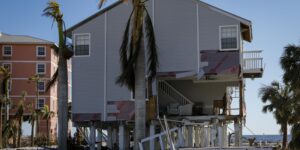Southern Californians were lucky that a magnitude-5.1 earthquake that hit in March just 20 miles east of Los Angeles caused minor damage. A far worse event in the region is inevitable, however, and the metropolitan region remains vulnerable, creating a need for insurers and property owners to plan for the worst.
So says catastrophe risk management firm Karen Clark & Company, which recently issued a new briefing that deconstructs what is known as the 2014 La Habra Earthquake, and analyzes what its implications are concerning preparation for more serious events down the line.
“Although the event was relatively small by California standards, it serves as a reminder that it is only a matter of time before a major earthquake impacts the Los Angeles region,” the report said.
The quake, which occurred on what is known as a “blind thrust fault” connected to the Puente Hills fault system, caused relatively light to moderate damage in parts of Orange County. The Puente Hills fault didn’t generate any reported seismic activity, either. Even so, the realities of geography indicate a more serious event will happen, according to the report.
Should the quake have hit differently, the Puente Hills fault could have been activated, pushing it to a typical average magnitude of 7.0 or more. Karen Clark & Company says that a magnitude 7.1 earthquake from Puente Hills could affect an area of over 1,000 square kilometers, slamming Ventura, downtown Los Angeles and Riverside, among other places.
The end potential result: $300 billion in total losses, according to the report.
The thing is, the Greater Los Angeles region sits on a complex network of faults and they can all produce major events, according to the report. The Puente Hills fault is among the most dangerous, even more risky than the legendary San Andreas fault, because it is close to densely populated areas and could lead to intense shaking over a wide area.
That’s where Karen Clark & Company shows renewed concern. Past California earthquakes have led to the retrofitting of a number of unreinforced masonry construction, which can be felled easily by earthquakes, the report notes. The report says, unfortunately, that plenty of building and property vulnerabilities remain.
“While most of the [unreinforced masonry] buildings in California have been retrofitted, URM is still used in construction of fences and chimneys for both residential and commercial properties, and as expected this vulnerable material experienced damage during the La Habra earthquake,” the report stated.
In other words, insurers and property owners could still do more to reduce risk before the big quake hits.




















 Underwriters’ Dilemma: Is AI a Cyber or Tech E&O Risk?
Underwriters’ Dilemma: Is AI a Cyber or Tech E&O Risk?  Florida Gets 8 New P/C Carriers After Insurance Market Reforms
Florida Gets 8 New P/C Carriers After Insurance Market Reforms  AM Best Downgrades State Farm General Ratings
AM Best Downgrades State Farm General Ratings  That Insurance Talent Crisis? It’s a Global Knowledge Opportunity
That Insurance Talent Crisis? It’s a Global Knowledge Opportunity 








